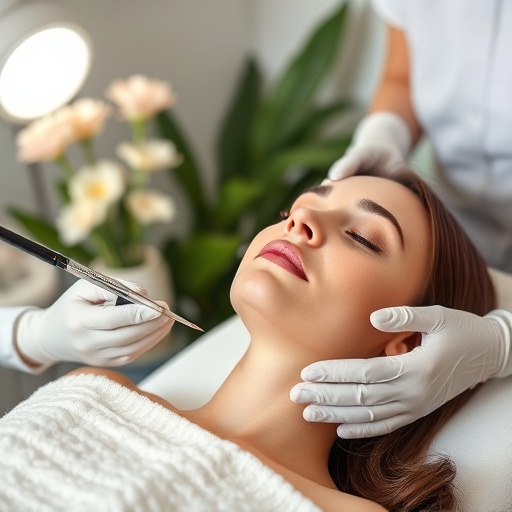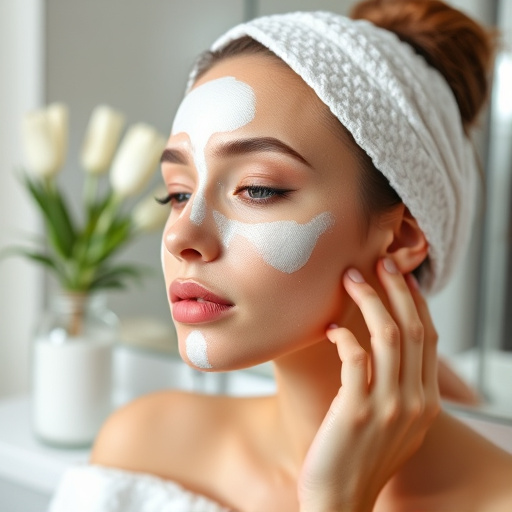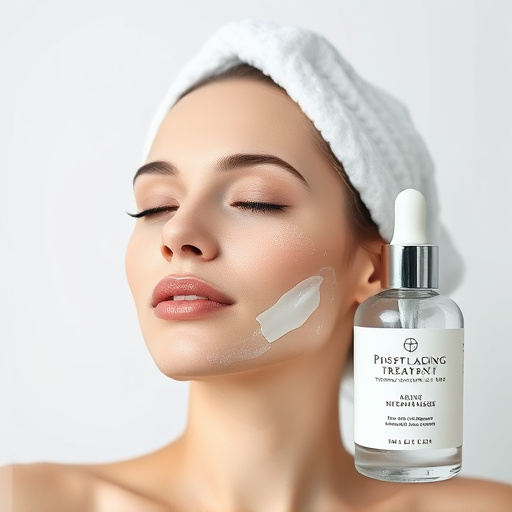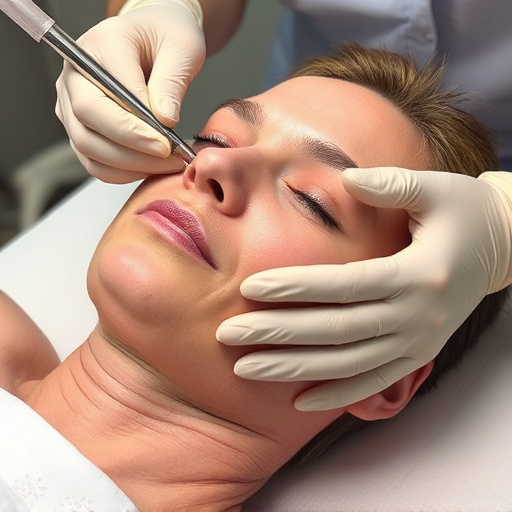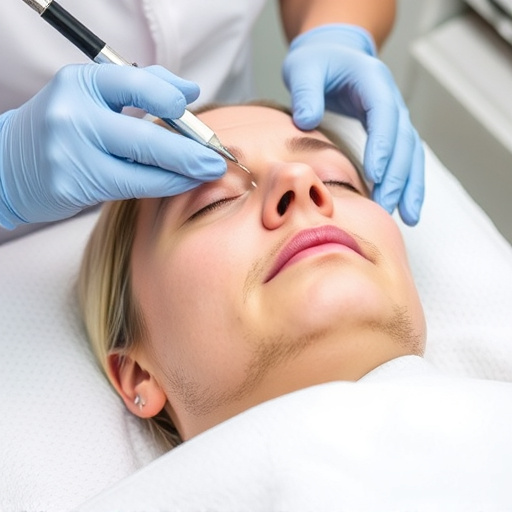Melasma treatment requires a personalized approach addressing hormonal, lifestyle, and environmental factors. While OTC creams offer options, results vary widely. Effective treatments include specialized facials, microneedling, chemical peels, and laser therapy, recommended by dermatologists to target hyperpigmentation deeply. Consulting a dermatologist is vital for tailored care and preventing complications.
“Uncover the facts behind over-the-counter melasma treatments in this comprehensive guide. Melasma, characterized by discolored patches on the skin, remains a mystery to many. While triggers like hormonal changes and sun exposure are known, understanding effective treatments is crucial. We explore whether popular over-the-counter options truly deliver or are merely marketing hype. From active ingredients to safety concerns, this article provides a detailed look at proven melasma treatment methods, empowering you with knowledge for informed decisions.”
- Understanding Melasma: Causes and Triggers Unveiled
- Over-the-Counter Treatments: Effective or Just Marketing?
- A Comprehensive Guide to Safe and Proven Options
Understanding Melasma: Causes and Triggers Unveiled

Melasma, often referred to as ‘mascaras of the face’, is a common skin condition characterized by dark patches on the cheeks, forehead, and other areas. Understanding its causes is key to effective melasma treatment. The primary triggers include hormonal fluctuations, particularly during pregnancy or due to birth control pills, sun exposure, and certain skin care practices. These factors can lead to an overproduction of melanin, resulting in the discolored patches.
While many over-the-counter creams promise melasma treatment, it’s crucial to note that their effectiveness varies. Customized facials and aesthetic treatments like microneedling therapy have gained attention as potential solutions. These approaches aim to rejuvenate the skin, reduce hyperpigmentation, and even out skin tone. However, consulting a dermatologist is essential for personalized advice, especially considering the intricate interplay between genetics, lifestyle, and environmental factors in melasma development.
Over-the-Counter Treatments: Effective or Just Marketing?

Over-the-counter (OTC) melasma treatments have gained significant popularity due to their accessibility and potential for being a cost-effective solution. However, the effectiveness of these products is often questioned, leading many to wonder if they are truly worth the purchase or merely marketing ploys. While some OTC creams and serums contain active ingredients that can help lighten hyperpigmentation, their results may vary widely from person to person.
Many brands market their melasma treatments with bold claims, suggesting they offer a quick fix for this complex skin concern. Laser hair removal, microneedling therapy, and skin tightening are sometimes thrown into the mix, but it’s essential to understand that these procedures address different aspects of skin care. For melasma, which is primarily linked to hormonal changes, an OTC treatment might provide some improvement, but it won’t eliminate deep-set hyperpigmentation without more intensive interventions like chemical peels or laser therapy, recommended by dermatologists for optimal results.
A Comprehensive Guide to Safe and Proven Options

When it comes to melasma treatment, navigating the vast array of over-the-counter options can be overwhelming. It’s crucial to approach this with caution, as not all products are created equal. A comprehensive guide should start with understanding that melasma, characterized by dark patches on the face, is influenced by hormonal changes and sun exposure. Therefore, any effective treatment must address both these factors.
Safe and proven options often include topical creams containing ingredients like hydroquinone (a skin-lightening agent), retinoids, or vitamin C. Chemical peels, another viable melasma treatment, use a combination of acids to exfoliate the skin and reduce hyperpigmentation. For those considering laser hair removal, certain lasers can target melanin production, offering potential relief. However, it’s essential to consult a dermatologist first to ensure these procedures are suitable for your skin health and to avoid complications.
While over-the-counter melasma treatments offer accessibility, their effectiveness varies. For many, these options fall short of providing significant improvement. A comprehensive understanding of melasma triggers, coupled with consulting a dermatologist for personalized guidance, remains the surest path to managing this condition effectively. Remember, a safe and proven melasma treatment plan tailored to your needs is key to achieving clearer skin.







